Exploring Persona 5 The Animation: Funimation's Adaptation
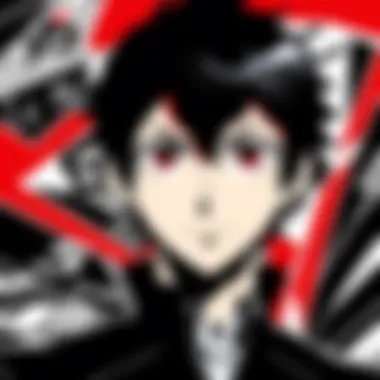

Intro
In the realm of anime adaptations, Persona 5: The Animation stands out as a significant endeavor by Funimation. Tapping into the rich lore and vibrant storytelling of the original video game, this adaptation aims to capture not just the visuals, but the very essence that fans have come to adore. The intricate narrative structures and character arcs present unique challenges. Understanding how this transition has been approached enriches the viewing experience.
This analysis will serve as a guide through various aspects of the anime, particularly focusing on character development, thematic exploration, and its cultural resonance within the broader anime community.
Understanding these elements will not only enhance appreciation for Persona 5: The Animation, but also elevate the conversation surrounding adaptations in general.
Character Profiles
Overview of Main Characters
Persona 5: The Animation features a diverse cast of characters, each contributing to the narrative's depth and complexity. The protagonist, Ren Amamiya, also known as Joker, is a silent character whose actions speak volumes. His journey from being a transfer student to a rebel leader reveals layers of resilience and conflict.
Another pivotal character is Ryuji Sakamoto, who embodies the spirited yet troubled youth often seen in stories of rebellion. His sense of camaraderie with Ren adds to the emotional core of the series.
An equally important figure is Ann Takamaki, whose character arc distinctly represents themes of self-identity and inner strength. Together, these characters navigate the entangled webs of society's injustices, each contributing different perspectives.
Supporting Characters
The supporting cast enriches the narrative further, with characters like Morgana, a magical cat with a past, serving as both companion and guide. Then comes Makoto Niijima, whose sense of duty contrasts sharply with the group's more carefree attitude. Each character, from Haru Okumura to Yusuke Kitagawa, brings a unique viewpoint, enhancing thematic discussions throughout the series.
These layers in character development showcase how Funimation has successfully adapted the game's narrative to highlight not just the story, but the evolution of its characters.
Theme Exploration
Central Themes
The themes within Persona 5: The Animation are profound, tackling issues such as morality, social reform, and personal identity. The idea of confronting one's shadow resonates deeply, representing internal and external conflicts faced by each character. The struggle against societal expectations becomes a driving force for the protagonists, reflecting a sense of rebellion against a flawed society.
Cultural References
Cultural elements are intricately woven into the fabric of the narrative. The anime references Japanese societal issues, such as pressure from educational systems and the stigma surrounding mental health. By incorporating these references, Funimation not only pays homage to the source material but also invites viewers to engage critically with the content.
"The fight against one’s own form of oppression is a universal battle, transcending cultures and time."
Closure
In summary, Persona 5: The Animation exemplifies a thoughtful adaptation that honors its roots while expanding its reach. Through character profiles and thematic depth, the series invites audiences to ponder the nuances of rebellion and identity. As we continue to witness the intersection of video game narratives and anime adaptations, Persona 5 will remain a pivotal example of what effective storytelling can achieve in both mediums.
Prelims to Persona The Animation
Understanding Persona 5 The Animation is crucial for grasping how Funimation has engaged with such a celebrated narrative. This anime adaptation translates the rich, dynamic world of the original video game into a format accessible to a broader audience. Efforts in adaptation often present various hurdles, such as preserving the core themes while catering to the expectations of anime viewers. This section introduces the foundational aspects that make the anime significant. It highlights how the choice of source material influences narrative structure and character development, setting the stage for deeper analysis in subsequent sections.
Overview of the Source Material
Persona 5, released in 2016, stands as a monumental title in the role-playing game genre. It combines storytelling, character depth, and exploration of complex themes like rebellion and identity. The game centers around Ren Amamiya, a high school student who becomes the leader of the Phantom Thieves. This group fights against societal corruption by entering the Metaverse, a supernatural realm reflecting the desires and emotions of humans.
The narrative constructs an intricate plot involving friendships, personal growth, and moral choices. Rich artwork and compelling soundtracks factor significantly into the game experience, creating an atmosphere that players find hard to forget. These features inform the anime adaptation, guiding decisions about character portrayal and storytelling techniques.
Transition to Anime
Transitioning the essence of Persona 5 into anime required careful consideration of both narrative and aesthetic elements. Funimation aimed to retain the game's narrative complexity while adapting it for episodic television. This involved not merely replicating scenes but rather translating the emotional beats and character relationships into a format that resonates with anime fans.
Key challenges faced during this transition included:
- Maintaining character development in a condensed format.
- Adapting the game's visual style to suit animation.
- Ensuring the narrative pace aligns with episodic releases.
The result is a series that captures the spirit of its predecessor while allowing a new audience to engage with its themes of rebellion and personal discovery. This deep engagement sets a precedent for future adaptations of video games into anime, offering insight into the balance between fidelity to source material and the requirements of a different medium.
"Adaptation is not about replication; it's about resonance."
The following sections will further explore these themes, examining Funimation's role, narrative structure, and cultural impacts.
Funimation's Role in Adaptation
Funimation plays a crucial part in the journey of Persona 5: The Animation from a celebrated video game to an engaging anime series. The studio's influence is significant at various stages of production, from initial localization to final distribution. Through its expertise, Funimation ensures that the essence of the original game is both preserved and tailored for a broader anime audience, thus highlighting the value of localization in media adaptation.
Overview of Funimation
Funimation is a leading company in the realm of anime distribution and production, involved in bringing a variety of shows to North American audiences. Established in 1994, it has become a major player in localizing popular anime for English-speaking viewers. Funimation is known for its dedication to quality in dubbing and subtitling, ensuring that tone and context remain intact when transitioning from Japanese to English. This dedication is essential for series like Persona 5: The Animation, where nuanced dialogue and emotional depth are paramount to the storytelling.
Despite its commercial focus, Funimation often cherishes the artistic value of the anime it imports. This respect aligns well with the thematic complexities present in Persona 5, making Funimation a fitting partner in this adaptation.


Production and Localization Choices
The production and localization choices made by Funimation significantly impact how Persona 5: The Animation resonates with fans of the original game as well as new viewers. Localizing an anime involves more than translating dialogue; it includes cultural adaptation and voice acting that reflects the original characters' essence. For Persona 5, this meant recruiting voice actors who could adequately convey the emotions and personalities of each character. The selection process involved understanding the deep connections players formed with the characters in the game.
Furthermore, Funimation's production team faced unique challenges. Balancing fidelity to the original work while ensuring the pacing and narrative flow suited a television format posed an intricate task. Each episode had to capture essential plot points and character development arcs without overwhelming viewers unfamiliar with the game. This careful calibration is one of the key factors that affect audience reception and engagement.
In summary, Funimation's role encompasses not just the technical aspects of adaptation, but also the creative choices that shape the viewing experience. Their efforts set a standard in anime adaptations, making it possible for Persona 5: The Animation to reach its audience effectively.
Narrative Structure of Persona The Animation
The narrative structure of Persona 5 The Animation plays a crucial role in delivering the story effectively. This adaptation is not just a mere retelling of the popular video game; rather, it encapsulates the essence of its rich narrative while reformatting it for an animated medium. Understanding this structure is essential for grasping how the series conveys its themes, character development, and overall storyline.
Framing the narrative requires attention to pacing, character focus, and thematic expression. The plot unfolds through a series of key arcs that reflect personal struggles, social injustice, and the journey of self-discovery. Each character's development is intertwined with these narrative threads, allowing viewers to connect with them on a deeper level. This approach emphasizes the importance of both plot and character in creating an engaging viewing experience.
Plot Summary and Key Arcs
Persona 5 The Animation presents a narrative primarily centered on Ren Amamiya, a high school student who becomes the leader of the Phantom Thieves of Hearts. The major plot arcs revolve around Ren and his companions' efforts to change the hearts of corrupt adults by infiltrating their distorted desires in a supernatural realm known as the Metaverse.
One of the key arcs introduces the audience to Ren's initial struggle with his new life after transferring to Shujin Academy. This arc is important as it sets the tone, establishing conflict and character motivation. As the story progresses, significant arcs focus on various antagonists, each representing different societal issues like abuse of power and corruption, which resonate with the viewers’ understanding of real-world justice.
Other pivotal arcs include each of the Phantom Thieves' meetings, where they strategize and plan their missions. Each mission not only serves to advance the plot but also allows exploration of individual character backgrounds. For example, the arc involving the character of Kamoshida delves deep into themes of sexual abuse and the ramifications it has on young students, providing a raw commentary on consent and accountability.
Character Arcs and Development
Character development is a linchpin of the narrative structure in Persona 5 The Animation. Each member of the Phantom Thieves undergoes a journey that mirrors Ren’s own path of self-discovery. The animation maintains a balance between group dynamics and individual growth.
For instance, Ann Takamaki, one of the central characters, evolves from being a victim of bullying to embracing her strength and fighting back against her oppressors. Her journey highlights themes of identity and empowerment that are crucial for younger audiences. Similarly, Ryuji Sakamoto’s arc details his personal struggles with societal labels and expectations, showcasing the impact of friendship and collaboration within the Thieves' mission.
One notable aspect of character arcs is how they intersect. Individual backstories and motivations are intricately woven into the narrative, providing deeper insight into their roles. This is especially evident during emblematic encounters where characters confront their past traumas. The collective development experienced by the Phantom Thieves encapsulates the narrative’s overarching message of rebellion against corruption and the importance of forging one’s path.
In summary, the narrative structure of Persona 5 The Animation is a thoughtfully crafted tapestry that expertly combines plot progression and character development. The structure not only captivates viewers but also conveys significant societal themes, achieved through the intertwining of individual arcs and the protagonist's journey.
Character Analysis
Character analysis is a crucial aspect of understanding Persona 5: The Animation. It provides insights into the motivations, growth, and relationships among different characters, which in turn shapes the narrative of the anime. Examining the characters deepens appreciation of the story, enriching viewer experience. In this section, we will analyze three categories: the protagonist, Ren Amamiya, the Phantom Thieves, and the supporting characters. Each group contributes significantly to the overall narrative and themes of the series.
Protagonist: Ren Amamiya
Ren Amamiya stands as the central character of Persona 5: The Animation. As a high school student, he embodies the struggles of youth against a backdrop of societal expectations. Ren's journey from a transferred student to the leader of the Phantom Thieves illustrates his development. He handles complex issues like injustice and despair while maintaining his values. This conflict-driven evolution resonates with viewers, making him relatable.
The way Ren interacts with others reflects his growth. He builds relationships with members of the Phantom Thieves and supporting characters, revealing layers of his personality. His ability to empathize highlights the themes of rebellion and justice. Undoubtedly, Ren's portrayal is a linchpin in delivering the anime's core themes effectively.
The Phantom Thieves
The Phantom Thieves are a unique ensemble that adds depth to the narrative of Persona 5: The Animation. Each character within this group illustrates varying aspects of society’s failings. They confront their own personal struggles while fighting against broader societal issues. Members like Ann Takamaki and Ryuji Sakamoto emphasize the diversity of backgrounds and experiences.
Their dynamics shift as they face challenges together. Each Thief has a significant role in addressing themes of friendship and collaboration. As they work towards a common goal, character bonds strengthen, revealing the importance of unity in adversity. The uniqueness of each Thief creates an engaging storyline, ensuring viewers are invested in their collective journey.
Supporting Characters
Supporting characters play an indispensable role in Persona 5: The Animation. Figures like Morgana and Makoto Niijima help illuminate key themes central to the plot. Morgana, as a guide and mentor, pushes Ren to realize his potential as a leader. His interactions carry humorous yet poignant moments that add levity and depth.
Makoto, on the other hand, represents the struggle for identity and self-discovery. Her character arc highlights the importance of inner strength when facing societal pressures. Every supporting character serves to reinforce the larger narrative, revealing complexities that enrich the overall story.
In total, character analysis not only enhances the understanding of Persona 5: The Animation but also showcases how each character’s journey intertwines with broader themes such as rebellion and self-discovery. The complexities of these characters make the anime a rich text worthy of deep exploration and appreciation.
Thematic Elements
The thematic elements in Persona 5: The Animation are pivotal in understanding the series' depth and appeal. These themes resonate not only with the characters but also with the viewers. They explore significant aspects of human nature and societal issues that remain relevant today. The examination of rebellion, friendship, and identity showcases the conflicts and transformations that individuals undergo in their lives. Each theme contributes to a richer narrative, drawing audiences into the story while prompting deeper reflections on their own lives.
Rebellion and Social Justice
Rebellion is a core theme within Persona 5: The Animation. The protagonists, known as the Phantom Thieves, challenge societal norms and fight against corruption. This rebellious spirit is not merely an act of defiance but stems from a thirst for social justice. The characters confront powerful figures who abuse their authority, often mirroring real-world struggles against oppression.
The representation of social justice struggles resonates with many viewers, creating a link between the fictional world and societal problems. The characters embody the desire for change, inspiring audiences to reflect on their own views regarding justice and morality. Through their journey, we see the importance of standing against injustices, which addresses not just personal concerns but the collective experience of society.
In Persona 5: The Animation, rebellion is not without consequences, and this adds layers to the narrative. The consequences emphasize how actions taken for justice can lead to both personal and social repercussions. This complexity enriches the story and prompts important discussions around the effectiveness of rebellion in achieving genuine change.
Friendship and Collaboration
Another vital theme is friendship and collaboration. The Phantom Thieves operate as a unit, and their bond is essential for their success. Each character, with their unique strengths and backgrounds, plays a part in the collective effort to bring about change. This theme reinforces the idea that personal growth often occurs in the context of relationships with others.
The series highlights how collaboration enhances problem-solving and fosters emotional support. Viewers witness the characters facing challenges not only as individuals but as friends, which strengthens their resolve and determination. The portrayal of friendships is realistic, showcasing challenges, misunderstandings, and ultimately, cooperation to overcome obstacles. This reflects the complexity of real-world relationships and the importance of communal support in achieving common goals.
The emphasis on friendship also extends to themes of loyalty and trust. The characters often must grapple with difficult choices that test their bonds. Through these experiences, viewers can relate to their struggles, reinforcing the significance of building strong relationships.
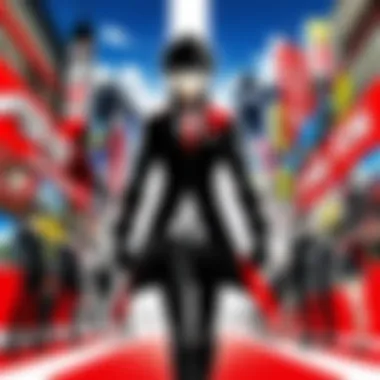
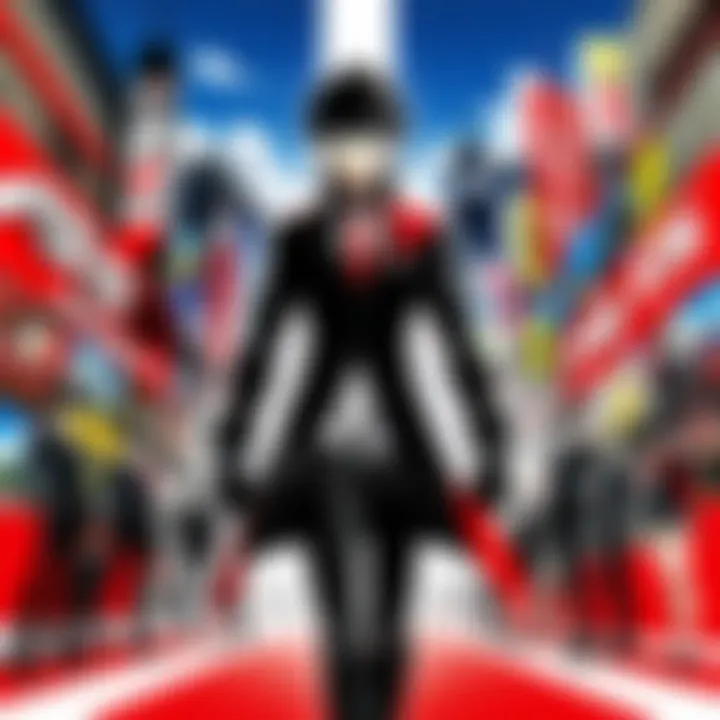
Identity and Self-Discovery
Identity and self-discovery are central to the narrative arc of Persona 5: The Animation. Each character embarks on a journey to understand themselves better, confronting their pasts and desires. The process of self-discovery is integral to both personal growth and the larger narrative.
The protagonists grapple with their identities against a backdrop of societal expectations and pressures. The exploration of identity ties back to themes of rebellion and social justice, as each character's struggle becomes a reflection of their desire to assert their individuality in a conformist society. As they realize their true selves, they learn to embrace their strengths and flaws, making their journeys relatable to viewers.
Self-discovery is depicted through various challenges the characters face, prompting viewers to examine their own lives. The series encourages audiences to reflect on their identities and the forces that shape them, offering a chance for deeper engagement beyond the screen.
Overall, the thematic elements of Persona 5: The Animation are intricately interwoven, providing a rich backdrop for character development and audience reflection. These themes enhance the viewing experience, drawing audiences into a narrative that is relevant, thought-provoking, and deeply engaging.
Reception and Critique of the Animation
The reception and critique of Persona 5: The Animation holds a significant place in understanding its impact on audiences and the anime community. This segment analyzes both the critical and audience reception of the series, illustrating how both perspectives contribute to shaping the overall view of the adaptation. It also highlights the importance of these insights for future projects and adaptations within the anime industry.
Critical Reception
Critics generally received Persona 5: The Animation with a mixture of appreciation and skepticism. The adaptation was often praised for its visual fidelity to the source material and its ability to capture the essence of the game. Critics noted that the animation quality, overseen by the production team at CloverWorks, frequently maintained a high standard, especially during pivotal moments that involved action and character interactions. However, there were constant points of critique regarding pacing and narrative focus. Many reviews pointed out that key elements from the original game were truncated or altered, leading to a sense of disconnection for those familiar with the game's expansive storyline.
The balance of character development also saw scrutiny. Some critics argued that while main characters received reasonable attention, supporting characters were often sidelined, diminishing their overall impact on plot progression. This led to contrasting opinions among critics, where some focused on the faithful adaptation of character designs and aesthetics, while others lamented the lost depth in character arcs.
"Persona 5: The Animation adeptly merges compelling visuals with an engaging narrative but falls short in narrative pacing and character development for some."
Audience Feedback
Audience feedback often reflected a divergent view compared to critics. Many fans of the original Persona 5 game loved the adaptation for its visual appeal and nostalgia factor. The vibrant color palette and dynamic animation style resonated well with viewers who cherished the game's aesthetic.
However, on platforms like Reddit, discussions showcased a significant concern over narrative choices. Fans expressed disappointment towards certain story omissions, expressing that these omissions diluted the emotional weight and complexity that they experienced in-game.
Understanding these two facets of reception helps shine a light on the fine balancing act needed when translating a nuanced narrative like Persona 5 into an animated format.
Cultural Impact
The cultural impact of "Persona 5: The Animation" extends beyond its immediate narrative. This adaptation serves as a pivotal case study in understanding how video game narratives can transition into the anime format and resonate with a wider audience. By examining its significance, we can appreciate how it shapes both the anime industry and fan communities.
One fundamental aspect is its influence on future anime adaptations. The series has set a benchmark for how complex narratives from video games can be articulated in a visual medium. Other adaptions can look to its success as a template, focusing on fidelity to source material while also catering to the nuances of an anime-centric audience.
For example, animations that follow Persona 5’s style often prioritize character depth and emotional storytelling. This approach encourages other creators to consider narrative richness alongside action or spectacle, which have traditionally dominated the genre.
Moreover, this adaptation reinvigorates discussions regarding the representation of mental health issues, societal pressures, and moral ambiguity. The characters navigate these themes, prompting audiences to reflect on their own lives. The conversations sparked in forums and fan communities illustrate the relevance of these topics in today's culture.
"The transformation of a game into an anime can significantly impact how themes are perceived by a broader audience. It is not just a story retelling but an opportunity for deep reflection on society." - Anime Critique
Additionally, the adaptation has revitalized interest in the original video game among both new players and old fans. Many have joined online communities to discuss character arcs, plot developments, and their personal interpretations of the storyline across various platforms, such as Reddit and Facebook.
As it stands, the cultural impact of "Persona 5: The Animation" lies in its dual role: it enhances the narrative landscape of anime adaptations while simultaneously fostering deeper engagement within fan communities. Through engaging discussions and new shared experiences, it illustrates how adaptations can serve as a bridge between two distinct yet interconnected realms—video games and anime.
Comparative Analysis with Other Anime Adaptations
In the realm of anime adaptations, a comparative analysis serves as a crucial examination. It allows for the identification of trends, successes, and shortcomings across various adaptations. By understanding how Persona 5 The Animation aligns or diverges from contemporaneous series, insights can be gained into the broader trends in anime adaptation practices.
The importance of this analysis lies in several specific elements. First, it sheds light on narrative approaches. Different adaptations often take varying paths in how they handle source material. Some prioritize fidelity, while others take creative liberties. Understanding this helps audiences appreciate the decisions made in Persona 5 The Animation and how they reflect on its story and characters.
Second, the analysis can reveal production quality elements. Some adaptations differ significantly in animation quality, voice acting, and overall production values. Comparing these factors helps contextualize Persona 5 The Animation in relation to its peers in the industry.
Similar Adaptations in Genre
When looking at similar adaptations within the genre, a few stand out. Titles like Danganronpa: The Animation and Tokyo Ghoul provide worthwhile comparisons. Each tackles themes of psychological drama, personal conflict, and moral ambiguity.
- Danganronpa: The Animation: Focuses on a group of students involved in a survival game where they must kill each other. Its fast pacing and dark themes reflect some aspects of Persona 5, particularly in the exploration of trust and deception.
- Tokyo Ghoul: Shares a narrative centered around identity struggle, much like Persona 5. The protagonist must navigate a dual life, which also resonates with the characters in the Phantom Thieves.
These examples highlight the varying strategies of adaptation and can enhance one's understanding of the nuances involved in bringing complex narratives to the anime format.
Unique Challenges Faced
Persona 5 The Animation faced its own set of unique challenges during its adaptation. One significant difficulty was capturing the expansive narrative of the original game. The game encompasses numerous quests, character interactions, and thematic explorations that needed to be condensed into a limited series format.
Another challenge was maintaining the tone and humor that fans love in the game. Persona 5 possesses a unique charm, combining serious themes with comedic relief. Balancing these elements without losing the essence during adaptation presents a constant struggle.
Moreover, character development is crucial. In the game, players delve deeply into characters, building relationships over time. In the animation, doing justice to that depth in a shorter format requires precise storytelling and pacing.
"A successful adaptation honors the source material while making necessary adjustments to fit the new medium."
Visual and Artistic Elements
The visual and artistic elements of Persona 5: The Animation play a pivotal role in shaping the overall experience of the series. An adaptation from a visually rich video game like Persona 5 presents both opportunities and challenges. The artwork, animation quality, and character design contribute significantly to the world-building and thematic representation of the narrative.
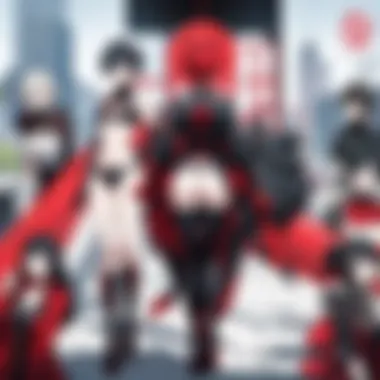
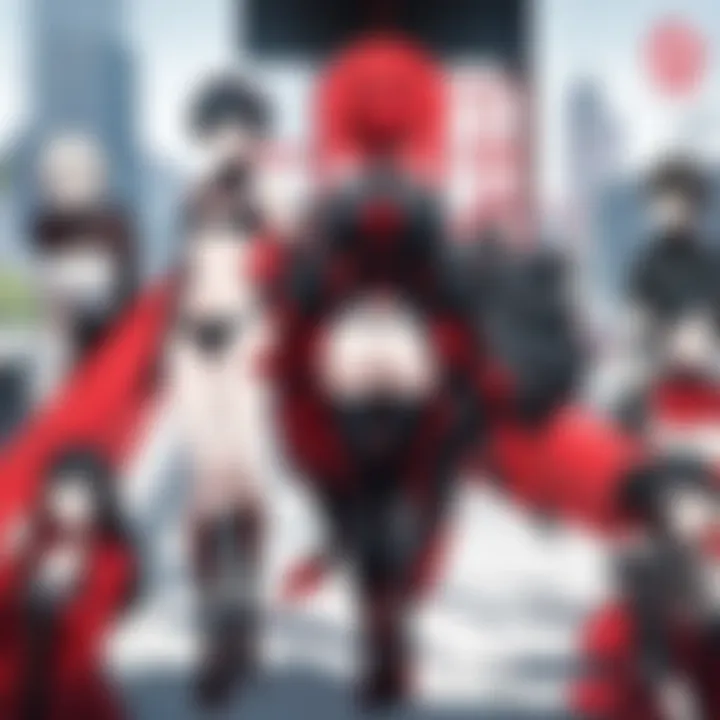
The animation style has a considerable impact on how viewers perceive the story. It serves not only to enhance the action sequences but also to portray emotional depth. The application of bold colors and distinct line work aligns closely with the stylistic choices made in the original game, creating a sense of continuity that fans appreciate. Moreover, the animation quality often reflects the emotions and motivations of the characters, making moments more powerful and memorable.
Animation Style and Quality
The animation style in Persona 5: The Animation is noteworthy for its blend of fluid movement and dynamic visual techniques. The sequence layout follows a cinematic approach, often utilizing techniques such as dramatic close-ups and wide-angle shots. This adds a layer of engagement that draws the viewer into the action. The animation quality is generally consistent, with notable attention to detail in character movements. In some scenes, however, the animation does not quite reach the expected level, which may disappoint some viewers used to high-caliber animation found in other series.
Features like unique color palettes enhance specific arcs or emotional revelations. For example, during battle scenes, the use of sharp contrasts can amplify the tension. This mirrors how the video game’s combat system employs similar aesthetics, enabling a satisfying transition from game to application.
Character Design and Aesthetics
When discussing Persona 5: The Animation, character design emerges as a critical aspect. Each character embodies distinct traits and styles, faithfully translating the visual identity established in the game. Ren Amamiya, for instance, retains his signature look, instantly relatable to fans. The accuracy in design aids in character recognition and builds connection with the audience.
Character aesthetics are crafted with intricate details that reflect each individual’s narrative journey. For example, the vibrant clothing of the Phantom Thieves highlights their rebellious nature while also hinting at their personalities. Moreover, varying color schemes often align with their psychological states, further enriching the visual storytelling.
In summary, the visual and artistic components in Persona 5: The Animation underscore its narrative complexity and character dynamics. The attention to animation quality and character design brings an additional layer of life to the adaptation, creating a bridge from the intricacies of the game to the realm of anime. This not only benefits viewers but also enhances the series' status in the landscape of anime adaptations.
Music and Sound in Persona The Animation
The significance of music and sound in Persona 5 The Animation cannot be overstated. Music serves as a vital narrative tool, enhancing the emotional weight of scenes and providing context to character experiences. The soundtrack is not just an accompaniment; it is interwoven into the storytelling itself, making it a crucial aspect of both the anime's identity and its connection to the original video game.
Soundtrack Overview
The soundtrack of Persona 5 The Animation is largely influenced by the original game's rich musical compositions. The game’s music was composed by Shoji Meguro, known for his distinct style that blends various genres such as jazz, rock, and orchestral. These elements have been thoughtfully adapted to fit the pacing and tone of the anime.
The anime features a mix of previously composed tracks and new music that reflects the updated context of the story. Songs like "Wake Up, Get Up, Get Out There" set a fierce tone for the protagonist’s journey, while more subdued pieces like "Beneath the Mask" capture moments of introspection. This careful selection ensures that key emotional beats resonate with the audience.
Key Track Highlights:
- "Wake Up, Get Up, Get Out There" - Establishes the urgency and rebellious spirit of the Phantom Thieves.
- "Beneath the Mask" - Reflects the inner struggle and development of the main characters.
The inclusion of vocal tracks adds an extra layer of connection, drawing viewers deeper into the narrative world. The sound design also enhances action scenes, amplifying the intensity of battles and the swift movements of characters.
Impact of Music on Viewer Experience
Music in Persona 5 The Animation plays a fundamental role in shaping the viewer's experience. When used effectively, it can elevate moments from ordinary to unforgettable. The strategic placement of tracks creates a lasting impression, facilitating emotional engagement.
The tempo and style of the music often dictate the pacing of a scene. Fast-paced tracks enhance action sequences, generating excitement and momentum. Conversely, softer melodies evoke a sense of nostalgia or melancholy, prompting viewers to reflect on character relationships and arcs.
"Music isn't just background noise; it is an emotional compass, guiding the viewer's feelings throughout the narrative."
The thoughtful integration of music not only captures the essence of characters but also supports thematic elements such as rebellion, identity, and friendship. Many fans speculate about how the music contributes to its popularity; it is an integral aspect that reinforces the overall aesthetic and emotional layers of the anime.
In summary, the soundtrack of Persona 5 The Animation does not merely accompany the visuals; it enriches the narrative experience and connects deeper with the audience, resonating with both longtime fans and newcomers alike.
Future of the Persona Franchise
The significance of the future of the Persona franchise cannot be understated. It represents both an evolution of the narrative explored in Persona 5 and an expansion of the universe that has captivated fans across the globe. As the franchise moves forward, it carries with it the weight of expectations from its dedicated community. The connection fans have forged with its characters and themes sets a high bar for any upcoming projects.
In the contemporary landscape of gaming and anime, franchises must adapt to maintain relevance. The expansive narrative and thematic complexity of Persona 5 offer rich material for further exploration. The intersection of video games and anime presents unique opportunities to delve into new mediums, perhaps leading to new storylines or character arcs.
"The continual success of the franchise relies not only on nostalgia but on innovative storytelling that resonates with players and viewers alike."
The franchise's future also raises several important considerations. How will new projects recognize the legacy of their predecessors? Will they embrace the same rebellious spirit that defined Persona 5? These are crucial questions that the developers must address as they build upon the established foundation.
Upcoming Projects and Expansions
Details on upcoming projects within the Persona franchise remain somewhat speculative. However, indications show that the engagement with Persona 5 is just the beginning. Rumors and speculation abound regarding potential remakes or sequels. Additionally, spin-off media, such as new anime adaptations or related games, are likely to emerge.
Many fans anticipate a deeper exploration of secondary characters from Persona 5. The potential for alternate storylines or side quests could provide valuable insights into these characters' motivations and backgrounds. Ideas such as further animated shorts or OVA episodes can keep the excitement alive while fans wait for major updates.
The Persona series has always been adept at merging gameplay with character development. Future projects have the opportunity to innovate within this framework. Expanding on multiplayer elements or integrating more cooperative play could invigorate the franchise while retaining its core strengths.
Legacy of Persona
The legacy of Persona 5 lies not only in its critical acclaim but also in its cultural impact. It has set a precedent for how video games can transition into anime. The deep thematic layers surrounding rebellion, friendship, and self-discovery have resonated with audiences, becoming a significant part of contemporary anime discussions.
Moreover, Persona 5 has influenced a wave of similarly themed games and adaptations. Its characters have become icons, and the franchise continues to inspire new narratives in various forms of media. The synthesis of mature themes with accessible storytelling is a hallmark of the series that continues to attract diverse audiences.
Ultimately, the enduring appeal of Persona 5 ensures its place not just within its immediate genre, but as a cultural artifact of this generation. As developments unfold in the Persona franchise, they will honor the groundbreaking work done through Persona 5 and strive to build upon that rich legacy.
Closure
In the final analysis of Persona 5 The Animation, its significance within the anime landscape cannot be overstated. The adaptation not only captures the essence of the revered video game but also expands its narrative and themes for a broader audience. This aspect is crucial as it serves to introduce the rich world of Persona to those who may not engage with video games.
Final Thoughts on the Animation
The animation serves its purpose effectively, bridging the storytelling and character exploration from its source material to the screen. While some may argue about the pacing issues or deviations, it is important to recognize the arduous task of compressing a sprawling narrative into a limited format. The decision to retain compelling character arcs and thematic depth was a wise choice. Fans can appreciate how the animation highlights the emotional experiences of characters like Ren Amamiya, bringing their fight against societal disillusionment to life visually.
The Enduring Appeal of Persona
The lasting allure of Persona 5 can be traced through its ability to resonate with diverse themes like rebellion, identity, and friendship. These elements stand strong, ensuring that both the anime and the original game maintain relevance. Whether it is the vibrant character design or the thought-provoking musical score, Persona 5 The Animation has established its place in the hearts of viewers. As a cultural touchstone in the anime community, this adaptation has reinforced discussions about how video game narratives can transcend their medium and enrich the anime genre. The legacy of Persona 5 continues to deepen, inviting new audiences to explore its multifaceted storytelling.







